1. | Make sure your document is ready to be shared and is open in Word.
|
2. | On the File tab, click Save & Send.
|
3. | Click Save to Web.
|
4. | Click Sign In.
|
5. | Type your email address and password in the sign-in dialog box; then click OK.
|
6. | When
Word displays the list of your available Windows Live folders, click
New. Your web browser opens and displays the Windows Live sign-in page,
as shown in Figure 5.
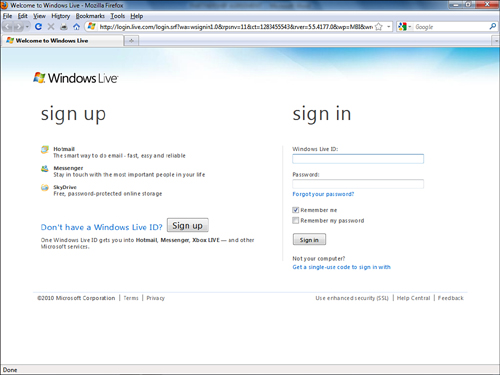
|
7. | Type
your email address and password, if necessary; then click Sign In. The
Create a Folder page appears in your browser, as shown in Figure 6.
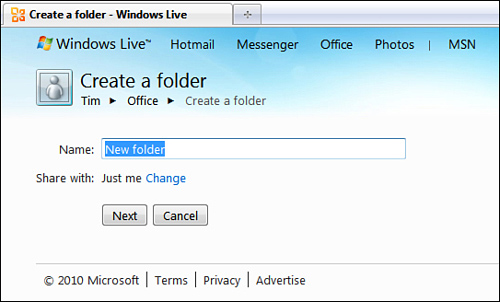
|
8. | Click the Name box and type a new name for the folder.
|
9. | Click the Change link next to the Share With option, and click one of the following options:
- Everyone (Public): Makes the
folder available to anyone who happens to stumble across it. Don’t put
anything in such a folder unless you’re OK with the idea of the whole
world seeing it.
- My Friends And Their Friends: Makes the folder available to the people who belong to your Windows Live network, and members of their networks too.
- My Friends:
Makes the folder available to the people who belong to your Windows
Live network, meaning they are included in your Windows Live contact
list. (That’s the list of email addresses you have saved in Hotmail or
Windows Live Mail.)
- Some Friends: Enables you to select certain friends from your network.
- Just Me: Keeps the folder private, so only you can access it.
- Add Specific People:
Lets you pick the people or groups that can share the new folder. To
select individuals from your Windows Live contact list, click the Enter a
Name or an E-mail Address box and start typing a name or email address.
If any names or addresses match what you type, they appear in a
drop-down list; click the one you want to add to the list of shares.
Alternatively, you can click the Select From Your Contact List link to
open a list that shows all your existing Windows Live contacts.
When you select an option, a drop-down menu of access privilege options appears next to it, as shown in Figure 7.
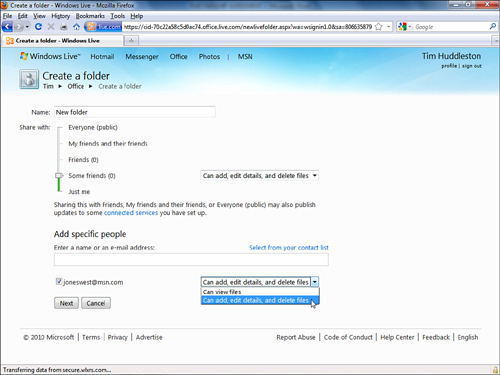
|
10. | Click
the drop-down arrow; then click one of the following options to assign a
level of access privileges to each person you select:
- Can View Files: The selected individual can open and read files in the folder.
- Can Add, Edit Details, and Delete Files: The selected individual can read, revise, and delete files in the folder.
|
11. | Select additional individuals and set their access privileges, as needed.
|
To remove anyone from the list of shares, clear the check box next to the name of that network, category, or individual.
|
|
12. | Click Next. Your browser displays a new page representing the new, empty folder, as shown in Figure 8.
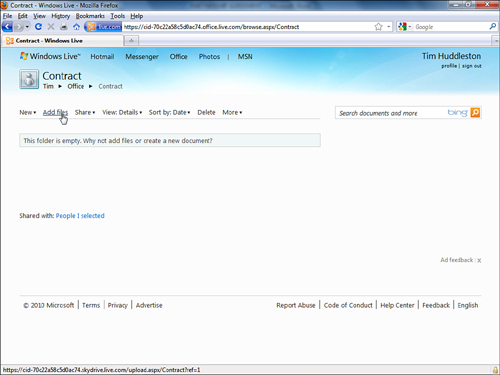
|
13. | Click the Add Files link. The page updates to display a large box where you can upload documents, as shown in Figure 9. However, since we started this process in Word, let’s go back there to finish.
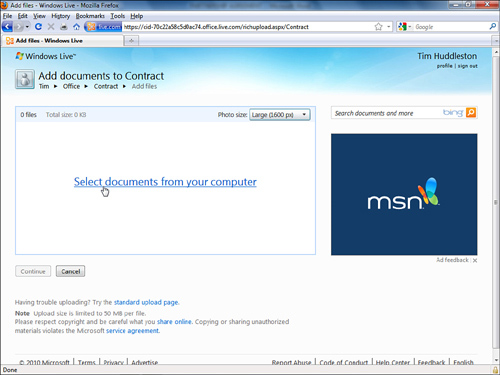
|
14. | Return to Word and click Refresh. Word updates the list of SkyDrive folders to include the one you just created.
|
15. | Click the new folder’s name; then click Save As. The Save As dialog box opens.
|
16. | Click Save to store the document in the new SkyDrive folder.
|